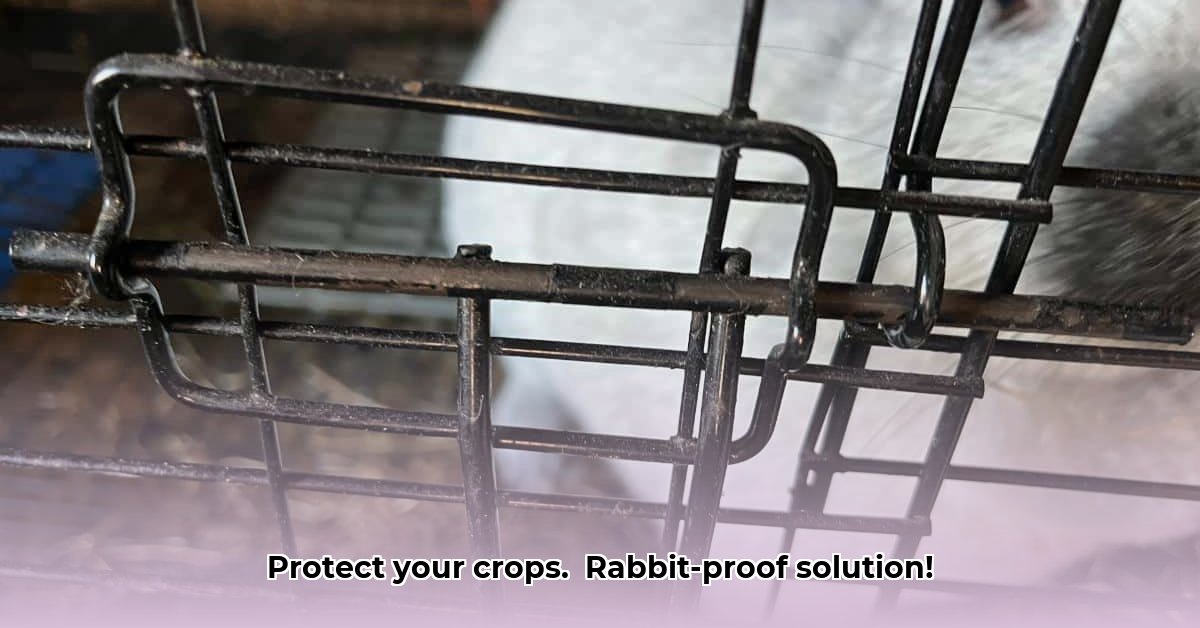
Tired of rabbits raiding your garden? This guide helps you protect your crops using rabbit wire from Tractor Supply and other effective, humane methods. We'll compare different approaches, costs, and environmental impact to find the best solution for you. For more on protecting your garden from pests, check out this helpful resource on chicken coop and tractor designs.
Understanding Your Fuzzy Foes: Rabbit Behavior
Before choosing a control method, understanding rabbit behavior is crucial. Rabbits are crepuscular (most active at dawn and dusk), agile jumpers, and expert diggers. They're drawn to tender young shoots and succulent plants. This knowledge helps you anticipate their foraging patterns and strategically protect vulnerable areas of your garden. For example, do they favor specific garden sections? Knowing this will help focus your protection efforts.
Fencing: Your First Line of Defense with Tractor Supply Rabbit Wire
A sturdy fence is the most reliable rabbit deterrent. Tractor Supply offers various rabbit wire options, but choosing the right one is key to success.
Choosing the Right Rabbit Wire:
- Height: Rabbits are excellent jumpers. Aim for at least 3 feet (36 inches), ideally taller.
- Mesh Size: A 1-inch mesh prevents them from squeezing through.
- Material: Galvanized wire is stronger, more durable, and rust-resistant.
- Installation: Bury the bottom several inches deep to prevent digging. Secure it firmly to sturdy posts using strong ties or staples. Consider adding landscape fabric along the bottom to further deter digging. A poorly installed fence is as good as no fence at all.
Tractor Supply often provides pre-assembled kits simplifying installation. These kits may include posts and staples, making setup quicker and easier.
Beyond the Fence: Repellents and Integrated Pest Management (IPM)
While fencing is a highly effective barrier, supplemental strategies can enhance protection. Repellents, both commercial and homemade, can provide added deterrence, but they are not reliable on their own. Many require frequent reapplication and their effectiveness can fluctuate with weather conditions.
Integrated Pest Management (IPM) takes a holistic approach:
- Habitat Modification: Remove weeds and dense ground cover that provide hiding places for rabbits. Trim back overhanging branches near your garden.
- Natural Predators: Encourage natural predators by creating a habitat that attracts them (e.g., nesting boxes for owls).
- Crop Rotation: Plant crops rabbits dislike near your vulnerable plants to divert their attention.
Combining fencing with an IPM strategy provides a sustainable, comprehensive solution. Is it worth investing in both? Absolutely, if you're serious about protecting your garden.
Making the Right Choice: A Decision Tree
Selecting the optimal method depends on your situation:
| Factor | Recommendation |
|---|---|
| Budget | Tight budget: Prioritize fencing, adding repellents as needed. Larger budget: Consider a complete IPM approach. |
| Garden Size | Smaller gardens may only need fencing and occasional repellent. Larger gardens often benefit from a multi-pronged strategy. |
| Time Commitment | Limited time: Opt for pre-assembled fencing kits. More time: Build your own fence and implement an IPM strategy. |
Remember, combining methods often yields the best results.
Case Studies: Real-World Experiences
One gardener successfully repelled rabbits using a Tractor Supply fence and commercial repellent. Another found repellents ineffective without a sturdy fence. These examples highlight that success depends on your context and the rabbit pressure in your area. What works for one person might not work for another. The key is experimentation and adaptation.
Cost-Benefit Analysis
Fencing has higher upfront costs but offers long-term protection. Repellents are cheaper initially but require ongoing expense. IPM methods initially require more time and planning, but offer long-term environmental benefits and reduce costs over time. Consider all costs before making a decision.
Conclusion: Sustainable and Ethical Rabbit Control
Effective rabbit control requires a strategic, sustainable approach. Combining fencing with IPM offers the best long-term solution, minimizing harm to rabbits and the environment while protecting your hard work. Remember, a strategic approach, not just a single solution, is crucial.